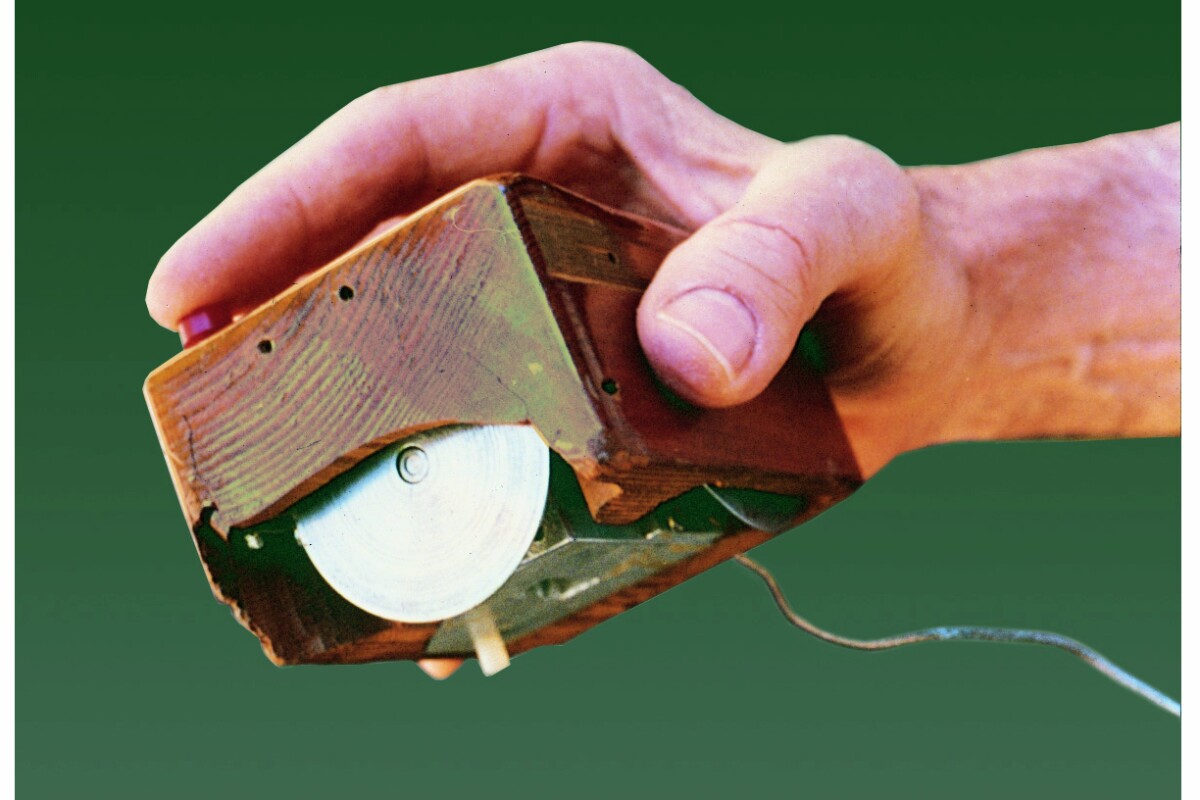Dr. Douglas Engelbart is perhaps best known as the inventor of the computer mouse, but when he unveiled that device at a computer conference in 1968 he also introduced additional technology that would profoundly affect computer-human interaction as much as the mouse has. During the "mother of all demos" at the Fall Joint Computer Conference held at the Convention Center in San Francisco, Engelbart and his team of researchers from the Augmentation Research Center at Stanford Research Institute gave a live demonstration of hyperlinks, remote collaboration software, on-screen windows, and even video conferencing.

In the 1950s and 1960s there was no such thing as a "personal computer", let alone a computer "mouse". In fact popular sentiment often leaned toward the view that computers would replace humans. Inspired by a book by Vannevar Bush called As We May Think, Engelbart wanted to find a way for computers to augment humans, not replace them. At the Stanford Research Institute (SRI) in California, Englebart founded the Augmentation Research Center (ARC) based on the philosophy of "augmentation not automation".
The system Engelbart developed with the team at ARC was called the NLS (which somewhat oddly stood for "oNLine System" -- so perhaps Englebart was also a pioneer of the lower-case first-letter approach to naming products). The NLS equipment included the first computer mouse, a monitor, a keyboard, and a five-keyed "chord set" that could be used with one hand to execute commands. The NLS consoles and office environment were designed by furniture innovator Herman Miller.

For the conference demo in San Francisco, the ARC team connected Engelbart's NLS terminal on the stage to the SDS-940 computer located at ARC in Menlo Park. A video projector enabled the 1000 people in the audience to see what was on Engelbart's screen and to watch him use the mouse and chord set. ARC team members were able to virtually join the demo from Menlo Park by using video and audio as well. Because the demo occurred before the Internet, and even before ARPANet, the lab and conference hall were connected using leased phone lines.

And so on December 9, 1968, Engelbart and his team gave a 90-minute live presentation of NLS. The system, which they had been working on since 1962, featured many computer firsts that we now take for granted: hyperlinks in text and graphics, dynamically linked files, object addressing, multi-user collaboration, and windowed screen displays. Of course the computer mouse, which Engelbart invented with ARC colleague Bill English, has become nearly ubiquitous now.
"Many of those firsts came right out of the staff's innovations," Engelbart would later say. "[They] even had to be explained to me before I could understand them."

Although many of the innovations have become standard in today's computers, the NLS was complex and meant for expert users. It was not a "personal" computing experience. Engelbart saw the NLS as a system for helping experts work with complicated information structures that were too complex to investigate using linear text.
"We didn't realize at the time that even a decade later it would still have been something fairly unique, and I was very disappointed in the months that followed [the demo]," recalled Engelbart in an interview years later. "I just thought that lots of people would start doing similar work because they would see that, 'boy! this is the way things are going to go!' And they didn't."
Of course, the technology and concepts that Engelbart pioneered at ARC eventually did catch on to such an extent that in 2000, Engelbart was honored with the National Medal of Technology by President Bill Clinton. The medal is the United States' highest technology honor, and recognizes innovators who have made a lasting contribution.
The NLS demo at the Joint Computer Conference was recorded, and the original 90-minute video of the event is part of the Engelbart Collection at Stanford University. The full-length video is also available edited into 35 video clips which can be seen on Stanford's Mouse Site. Here are just a couple.














